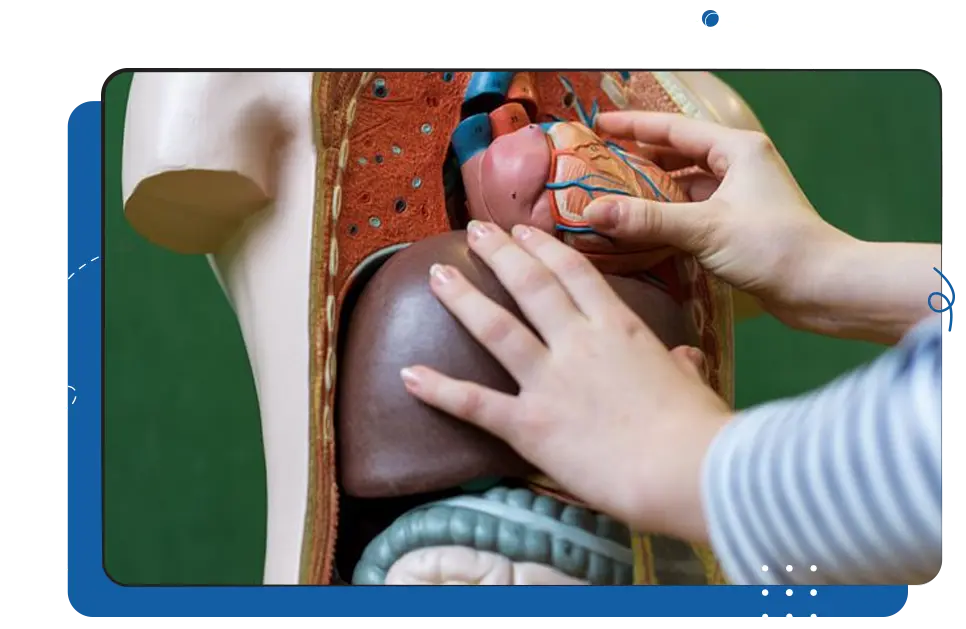About the Course
The Anatomy & Physiology course is designed specifically with high school students in mind. To provide students with a base knowledge of scientific principles related to the field of Anatomy & Physiology, lessons focusing on common lab safety procedures, experimental design, methods for analyzing data, and more are included. Students in Anatomy & Physiology will explore a variety of topics, including the structure and function of the human body and the interaction of body systems for maintaining homeostasis.
SAMPLE LESSON
Human Physiology: Muscular System
Each lesson includes media-rich presentations, a pre-made lesson plan, assessments and engaging real-world projects and activities. To get an idea of what iCEV offers, explore the sample lesson and resources below.
Lesson Resources:
Lessons Available in This Course
- English Applications
- Science Explained: Anatomy & Physiology
- Tools & Equipment in Anatomy & Physiology
- Analyzing Data: Anatomy & Physiology
- The Human Body
- Emerging Technologies: Science & Medicine
- Human Physiology: Nervous System
- Human Physiology: Skeletal System
- Human Physiology: Muscular System
- Human Physiology: Integumentary System
- Human Physiology: Cardiovascular System
- Human Physiology: Respiratory System
- Human Physiology: Digestive System
- Human Physiology: Urinary System
- Human Physiology: Endocrine System
- Lymphatic System: Blood Typing
- Human Anatomy: Reproductive System
- Reproductive System: Embryological Development
- STEM Careers: Anatomy & Physiology
- Impact of Science: Anatomy & Physiology
- Experimental Design: Anatomy & Physiology
- Communicating Findings in Anatomy & Physiology
- Understanding Homeostasis
- Human Anatomy: Nervous System
- Human Diseases & Disorders: Nervous System
- Human Diseases & Disorders: Skeletal System
- Human Diseases & Disorders: Muscular System
- Human Diseases & Disorders: Integumentary System
- Human Diseases & Disorders: Cardiovascular System
- Human Diseases & Disorders: Respiratory System
- Human Diseases & Disorders: Digestive System
- Human Diseases & Disorders: Urinary System
- Human Diseases & Disorders: Endocrine System
- Human Physiology: Lymphatic System
- Human Reproductive System: Hormones
- Human Diseases & Disorders: Reproductive System
- Professionalism in the Sciences: Anatomy & Physiology
- Lab Safety Procedures: Anatomy & Physiology
- Conducting Lab & Field Investigations: Anatomy & Physiology
- Developing a Model: Anatomy & Physiology
- Metabolic Pathways
- Nervous System: Understanding the Senses
- Human Anatomy: Skeletal System
- Human Anatomy: Muscular System
- Human Anatomy: Integumentary System
- Human Anatomy: Cardiovascular System
- Human Anatomy: Respiratory System
- Human Anatomy: Digestive System
- Human Anatomy: Urinary System
- Human Anatomy: Endocrine System
- Human Anatomy: Lymphatic System
- Human Diseases & Disorders: Lymphatic System
- Human Physiology: Reproductive System
- Anatomy & Physiology Capstone*
*This lesson was added to the course after Proclamation 2024 review to enhance student learning and application of concepts included in the course.
Note: In addition to counting as a Health Science credit, the Anatomy & Physiology course can also be used to count as a general science credit to fulfill student requirements.
Health Science Course Resource
Anatomy & Physiology Curriculum: Reviews and Comparisons
If you teach high school CTE health science, then you know that choosing the best anatomy and physiology curriculum for your students is essential. After all, understanding complex body systems, their functions, and diseases and disorders is paramount to a successful medical career.




